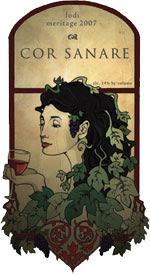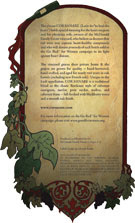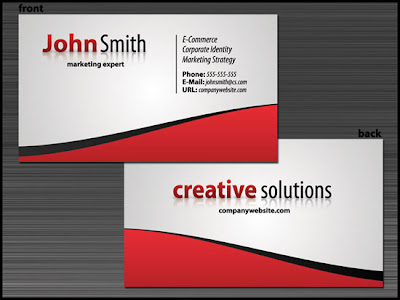




Whatever profession you’re in, there’ll come a time when you’ll need your own business card. This graphic design tutorial will show you a way to create a standard two-sided business card design in Adobe Photoshop that you can take to your printer.
Your task is to complete the tutorial and create your business card and letter head Due date: TBA
Tutorial:
 Creating the cover of your yearbook will be one of the most important jobs you take on during the year. After all, the cover will almost always be the first element of the book that readers will see.
Creating the cover of your yearbook will be one of the most important jobs you take on during the year. After all, the cover will almost always be the first element of the book that readers will see.Final due date: Your task is to complete a Yearbook Cover design by Tuesday Oct 19th. Class presentation and critique 10%.
Requirements:
 NEW YORK (AdAge.com) -- Just four days after confirming its surprise new logo was, in fact, legit, Gap is returning to its old design, Ad Age has learned. The announcement is expected to be made at 4:30 Pacific Time today on the brand's Facebook page.
NEW YORK (AdAge.com) -- Just four days after confirming its surprise new logo was, in fact, legit, Gap is returning to its old design, Ad Age has learned. The announcement is expected to be made at 4:30 Pacific Time today on the brand's Facebook page.
The logo, created by New York agency Laird & Partners, was intended to be a long-term commitment for the brand with a nod to the future. Ms. Hansen's about-face about the Gap's new logo was foreshadowed by a blog post she wrote for the Huffington Post last Thursday. "We chose this design as it's more contemporary and current. It honors our heritage through the blue box while still taking it forward," she said. "Now, given the passionate outpouring from customers that followed, we've decided to engage in the dialogue, take their feedback on board and work together as we move ahead and evolve to the next phase of Gap."
Calls to Laird & Partners were not immediately returned.
Gap representative Louise Callagy also told Ad Age that the logo debacle does not mean that it has ended its relationship with Laird & Partners. "We are still engaged," she said. "Given this response, we decided to open it up. We'll explain more specifics in the next few days."
Gap posted a message on its Facebook page last night saying that in light of the response to its new logo it will be conducting a "crowdsourcing project."
"Thanks for everyone's input on the new logo! We've had the same logo for 20+ years, and this is just one of the things we're changing," The Facebook post reads. "We know this logo created a lot of buzz and we're thrilled to see passionate debates unfolding! So much so we're asking you to share your designs. We love our version, but we'd like to ... see other ideas. Stay tuned for details in the next few days on this crowdsourcing project."
Asked why Gap handled the rollout the way it did, Ms. Callagy said it was intentional. "Gap's target customer is the millennial, and we're exploring ways to communicate with them," she said. "On Monday, without a lot of fanfare, we introduced the logo on the Gap.com site. ... That's in line with them."
But what about the customers who feel betrayed by the way Gap up and changed the brand without cluing them in? "We're addressing that by opening it up and having everyone participate in the process," she said. "We'll see how it goes."
To read original story, click on the following link: http://adage.com/article?article_id=146353
 This past Monday, without a lot of fanfare, we introduced a new logo on our gap.com site, and I wanted to take this opportunity to explain our thinking behind this decision.
This past Monday, without a lot of fanfare, we introduced a new logo on our gap.com site, and I wanted to take this opportunity to explain our thinking behind this decision. I've been president at Gap brand for the past three years, and I've been living and breathing the changes we've been making on our journey to make Gap more relevant to our customers.
You've seen this evolution through many of our products, such as the 1969 premium denim and the new black pants, and more modern stores in many locations.
The natural step for us on this journey is to see how our logo - one that we've had for more than 20 years - should evolve. Our brand and our clothes are changing and rethinking our logo is part of aligning with that.
We want our customers to take notice of Gap and see what it stands for today.
We chose this design as it's more contemporary and current. It honors our heritage through the blue box while still taking it forward.
Now, given the passionate outpouring from customers that followed, we've decided to engage in the dialogue, take their feedback on board and work together as we move ahead and evolve to the next phase of Gap.
From this online dialogue, it's clear that Gap still has a close connection to our customers, so tapping into this energy is right. We've posted a message on the Gap Facebook Page that says we plan to ask people to share their designs with us as well. We welcome the participation we've seen so far.
We'll explain specifics on how everyone can share designs in a few days.
Thank you to everyone who has already shared feedback. I'm excited about continuing the conversation and believe passionately in where we're taking our brand.
The Assignment: The Gap Inc. Logo Re-design--Due Oct 29th
The Gap Inc. ask people to share their designs. They welcome your participation and it's your opportunity to create your own logo for the Gap Inc.
Your task, therefore, is to redesign the Gap logo. All Logos must be Vector base and a maximum one colour: blue and two values (Black and White)
PURPOSE OF THE ASSIGNMENT:
To design and produce material promoting Against Drinking and Driving to students, aged 16 -21
SKILLS AND KNOWLEDGE TO BE TESTED:
Design, graphics and layout skills used to create a promotional material. Participants will
create a theme and visual concept.
“Smashed!” Poster Assignment
due by 3:30pm Sunday March 26th, 2010
Mothers Against Drinking and Driving, The National Highway Traffic Safety Administration (NHTSA) and the Toronto Police are dedicated to keeping the roadway clear of drunk drivers this Summer holiday and, as a result, they have created a number of promotional posters for bars, restaurants and retail establishments. These posters
Your task: is to create a Poster for this Campaign with the provided images. The Poster must have the title, “Smashed” and the following MADD and Toronto Police logos.
All material must reflect the theme and be consistent in content. The design used must be
the original and creative work of the individual competitor.
Stock photography and illustration are acceptable, as well generated by hand or by using
electronic equipment and appropriate software. Full colour may be used
The poster dimensions: 10” by 16” to allow for full bleed and trim. The poster can be
either horizontal or vertical.